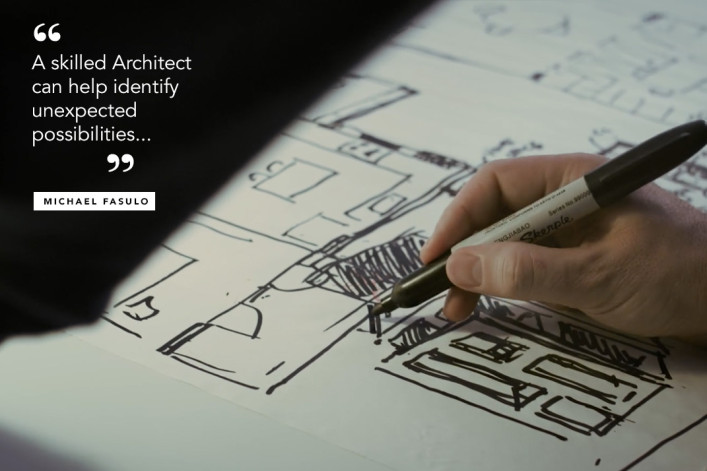The Greatest Guide To Janjic Architecture
Table of ContentsThe Facts About Janjic Architecture RevealedOur Janjic Architecture StatementsJanjic Architecture - An OverviewEverything about Janjic Architecture
Architects are specialists who develop structures and other structures, guaranteeing they are both functional and aesthetically pleasing. They are responsible for producing rooms that meet the demands of the individuals who use them while likewise considering security, sustainability, and conformity with building laws. Engineers consider security, usability, ecological impact, power effectiveness, and local zoning legislations while establishing layouts for different kinds of frameworks, including household, business, public buildings, and even specialized structures like hospitals and schools.
Architects do far more than layout visually pleasing buildings. They are associated with every stage of a building's construction, from its perception to the ribbon-cutting ceremony. On any type of offered day, an engineer could consult with customers, prepare construction records, or go to a worksite. A designer's particular responsibilities transform from project to job, yet common responsibilities include:: Creating building concepts and layouts, consisting of theoretical sketches, 3D versions, and renderings to picture the last product.: Preparing thorough illustrations and strategies making use of innovative software such as AutoCAD, Revit, SketchUp, or another device, ensuring that all technological specifications are included.: Collaborating with clients, engineers, contractors, and various other stakeholders to integrate responses, ensure the style meets customer needs, and preserve alignment with project goals.
: Making sure projects abide with building regulations, zoning legislations, safety regulations, and access standards to guarantee the safety and security, validity, and high quality of the last structure. Architects put on a great deal of hats in their everyday job, so the abilities required to be effective as an engineer are varied. Some crucial skills you need to work as an architect consist of:: Incorporate visual charm with capability to create gorgeous and practical spaces.: Apply innovative math ideas, including geometry and physics, to guarantee layouts are risk-free and functional.: Settle design-related and legal problems properly to maintain tasks on track.: Guarantee every aspect of the design is accurate to stay clear of setbacks.: Team up efficiently with customers, designers, service providers, and other professionals.: Job well with others to bring projects to fulfillment, collaborating with different stakeholders.: Take ownership of tasks and inspire groups to ensure effective implementation.
Some trainees select to make both the B - Architecture.Arch and the M.Arch; nevertheless, this is not a need for licensure. If you have a four-year bachelor's level in style or one more discipline, you can gain an M.Arch and certify for style licensure. Becoming an engineer needs extensive training and a wide variety of coursework
All about Janjic Architecture
These programs prepare students for the diverse challenges of building technique, furnishing them with the skills required to be successful in their professions. Coming to be an engineer requires dedication, imagination, and a clear understanding of the actions involved. From education and learning to licensure, this guide offers a general roadmap for aiming engineers to navigate the path towards an effective occupation in design.
There are a few different courses to ending up being an architect, yet both detailed below are the primary methods:: This is a five-year undergraduate program that provides fundamental expertise in architectural layout, background, theory, and technology. It is among one of the most typical paths to coming to be an architect.: The M.Arch is a graduate-level program for pupils that already hold an undergraduate level.
This multi-division examination tests your skills and expertise of design. The present variation of the test is called ARE 5.0 and includes 6 divisions. These divisions might be taken in any kind of order however should be passed within 5 years to get approved for design licensure. Visit Kaplan's ARE Test Source Center to learn concerning the ARE 5.0.
After getting your license, you can formally practice as an architect and start functioning individually or with a firm. The NCARB Certificate is a credential that facilitates reciprocity, enabling you to work across numerous territories.
Janjic Architecture Fundamentals Explained

(https://photouploads.com/janjicarch)Building and construction can be equal parts amazing and demanding. Although it's exciting to see your vision revived, you might feel overwhelmed by schedules, payments, and unforeseen scenarios. We think one of the most successful jobs take place when the architect plays an energetic duty in building, and throughout the process, we remain in consistent interaction with our clients and their contractors.
The Single Strategy To Use For Janjic Architecture
Before diving right into assumptions, we need to first clarify the function of an architect in building and construction. Many of an engineer's work occurs before construction begins, they stay on the job till completion.
On many tasks, nevertheless, you will primarily communicate with your architect. Especially, you can anticipate your designer to execute the following obligations: Before building starts, your architect will certainly develop assumptions with you and your contractor.
